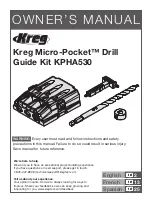
18
that protects it from vibrations, as in extreme
cases, vibrations can destroy the circuit board
of the LEDs (rubber-mounted handlebar clamps
generally offer sufficient vibration protection).
The electric cables must not be subjected to any
tensile forces, even when the steering is at full
lock. The cables must be routed in such a way
that they cannot chafe and they must not bend.
If necessary, an extra cable sheath or a rubber
cable feed-through can be used.
Any resistors that are installed may heat up
during use and therefore must not be installed in
the direct vicinity of heat-sensitive components or
in closed housings. Depending on the duty cycle
of the turn signals, temperatures of 80°C or more
may occur during operation. Only resistors with
heat sink may be used.
The turn signal itself also warms up during
operation – skin contact must therefore be
avoided.
Ensure that the turn signal is securely mounted
and working correctly before every journey.
4 | INSTALLATION
4.1
|
Legal requirements regarding the installation of turn signals
If the motorcycle was registered according to EC law (almost all
vehicles since date of first registration from around 1998), the
following measurements apply:
Distance between the front turn signals of at least 240 mm
(inside edge of turn signal lens to inside edge of turn signal
lens), height above the carriageway 350 - 1200 mm.
Distance from the rearmost point of the vehicle to the turn
signal should be a maximum of 300 mm.
Distance from the turn signal to the headlight of at least 75
mm (inside edge of turn signal lens to outer edge of headlight
lens).
















































